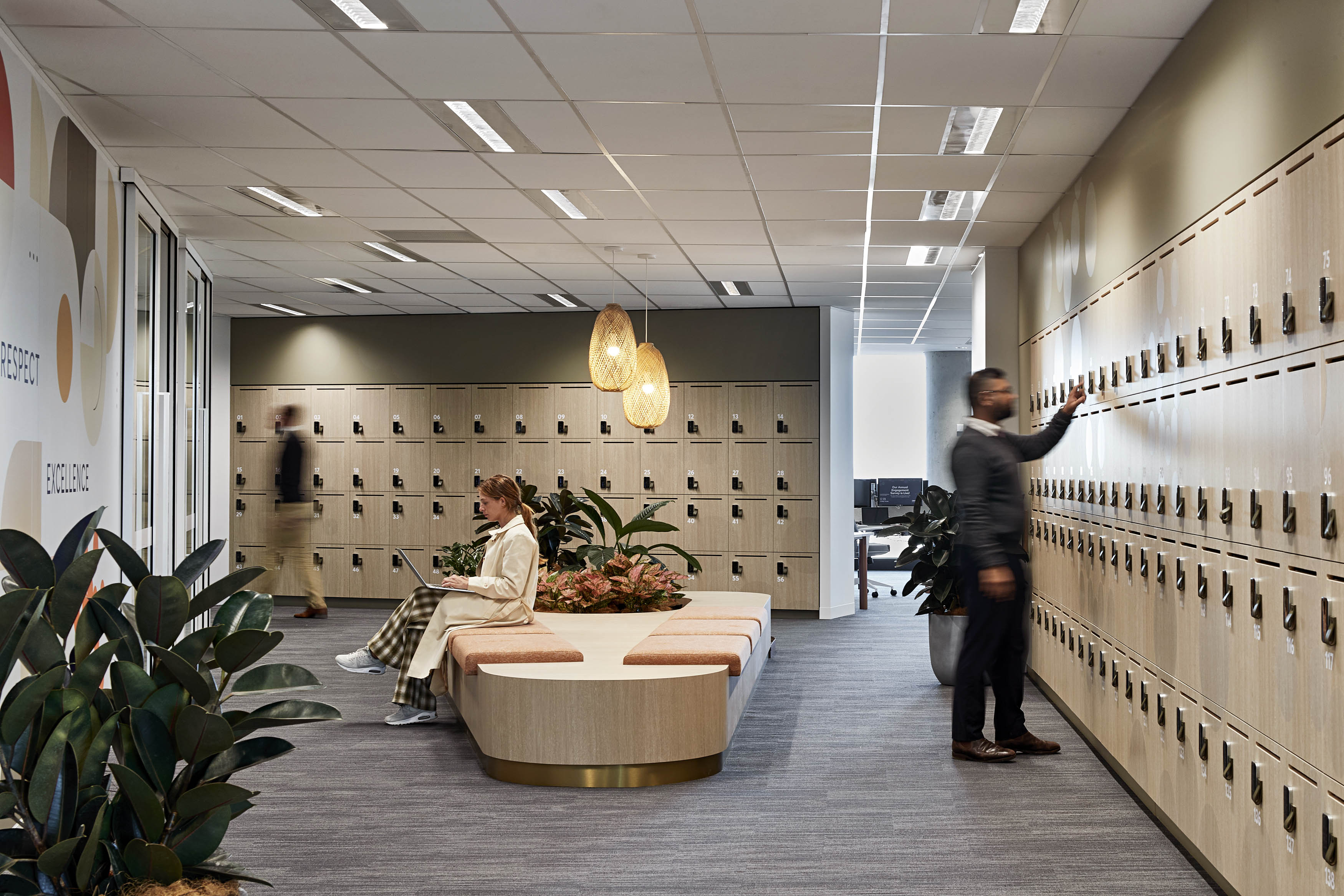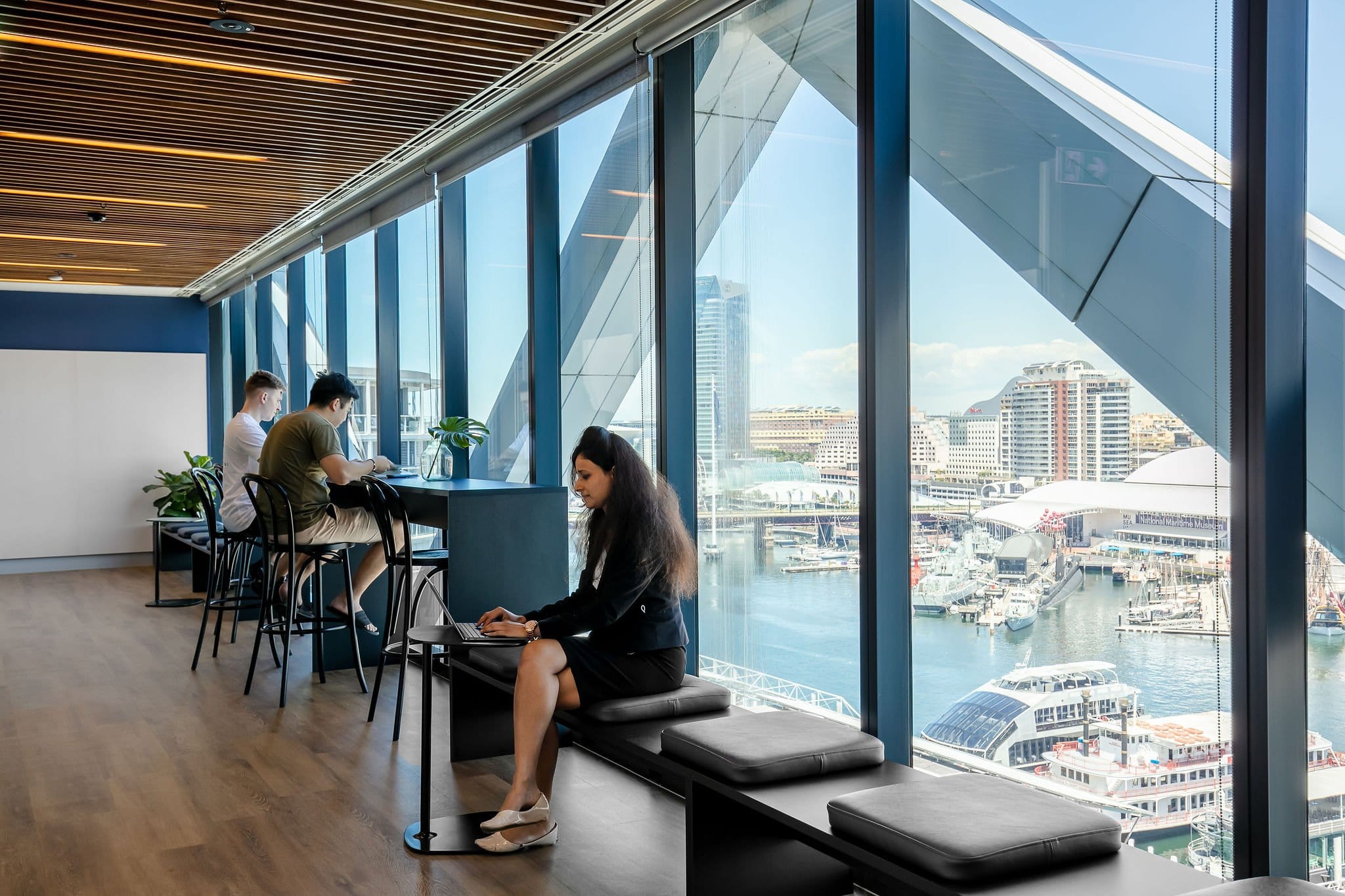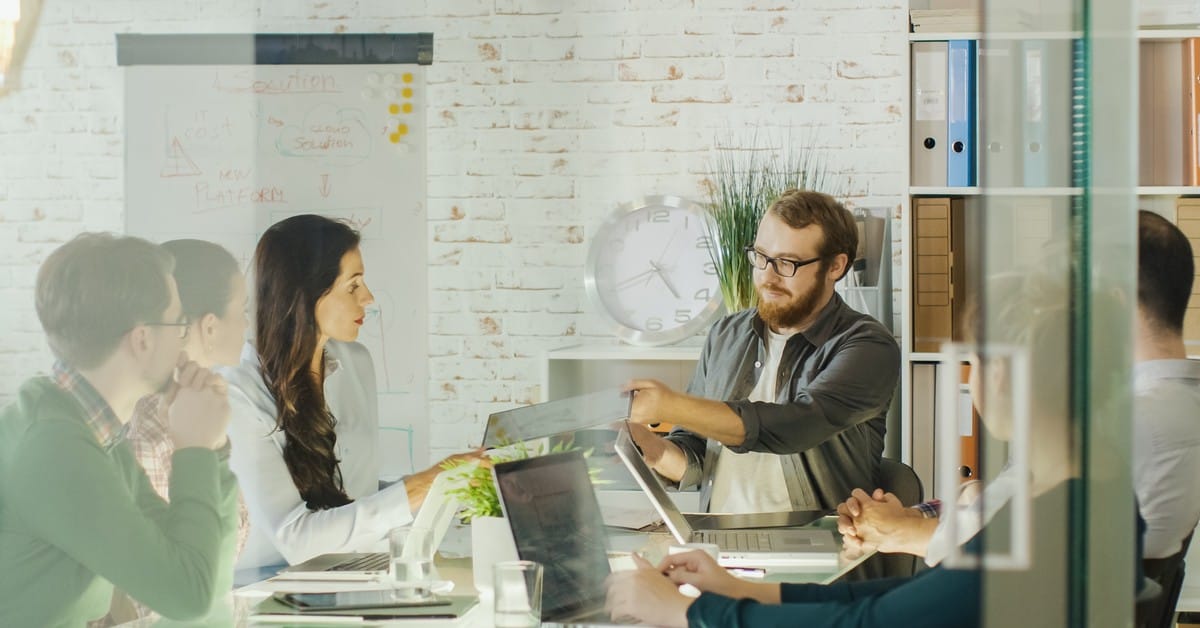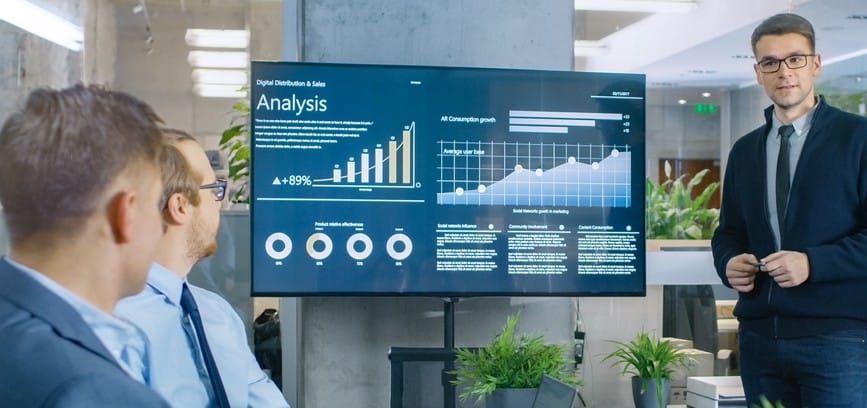What we can learn from the world's best workplaces


Do you know how your employees get to work? Attitudes towards the commute have shifted. While employees are reconsidering the time and money it costs for them to get to the office, businesses must also be considering the role of the commute.

Office meetings will be in the metaverse within three years, according to Microsoft co-founder Bill Gates. He predicts that virtual meetings will evolve from the current 2D images to full 3D avatars.
“Metaverse” is the latest buzzword going around the tech industry that can potentially revolutionise the way we live, work and play. Some are saying the metaverse is the future of work, and the office will be a thing of the past.
But what is the metaverse, how will it impact the way we work, what's the best way to prepare and when will we actually see and experience it? And the big one:
Spoiler alert: the physical office will not only live on, but even be enhanced by the metaverse.
“We believe the metaverse will be the successor to the mobile internet, we’ll be able to feel present – like we’re right there with people no matter how far apart we actually are.” (Mark Zuckerberg, Facebook CEO)
Some are calling it the next evolutionary step for the internet - web 3.0. The metaverse renders everything in 3D rather than the current 2D visuals we currently see today. It “brings the internet to life”, and builds a virtual world of interconnected communities where everyone can meet, work and play.
Coined by Neal Stephenson in his 1992 novel “Snow Crash”, the term metaverse refers to a digital environment that enables people to interact as avatars, using VR headsets and glasses. Think of it as a cyber realm where you can move and act in the same way as in the physical world, and directly interact with other people from any location on the planet as if they were standing right next to you.
The metaverse will go beyond the current Zoom or virtual meeting, and transform the way we work and interact with our colleagues and teams. Here are some ways the metaverse will change the future of work:
According to Mark Zuckerberg, the metaverse will open up new forms of work where people no longer need to be physically together to “feel present, collaborate or brainstorm.” Using 3D avatars, workers from different locations can meet in virtual spaces to interact, communicate and collaborate as if they were sitting side-by-side in the same meeting room. This will allow people to do more online like manage projects, design products or buildings, and other team-based activities. Also, with VR headsets and motion capture gloves, coworkers can see everyone’s expressions and body language.
Since the metaverse enables a work from anywhere model, employees are no longer confined to their workstations and cubicles. They are free to work at home, at a cafe, at regional locations, or at any other area where they feel comfortable and creative. Also, long commutes to work will be a thing of the past, since all interactions would be happening in a virtual environment.
The metaverse will not only bring change in the workplace, but also open new work opportunities as businesses adapt to the new digital environment. There will be new jobs created that do not currently exist - similar to social media jobs that would have been unthinkable before the internet. Also, some jobs today may need to change to accommodate this new virtual world, providing workers opportunities to learn and re-skill. Lastly, there will be new types of companies that may emerge to manage and facilitate the metaverse, delivering more job opportunities for people in any location.
That’s one difficult question to accurately answer. Although some of the needed technologies to enable the metaverse already exist, they are still in the early stages and have limited capabilities. Some say the full metaverse may take years to complete and launch. There are still a number of challenges that need to be addressed, including:
We know that it will take years before the technologies needed can mature and enable a full metaverse - but even if they do, the metaverse will not replace the physical workplace. Here are some of the reasons why the office will still play a crucial role in the future of work:
Our need for in-person or face to face interaction is the biggest reason why the metaverse will not replace the physical workplace. The office is not just a place to work. It is where people can collaborate, socialise, and build lasting relationships. Working from home during the COVID-19 pandemic has made people realise their need for some sort of physical connection. And the office provides a space where workers can establish this connection, have those ‘water cooler’ moments, and work creatively as a team.
Online gaming is perhaps the closest thing we have now to experiencing the metaverse. Online games allow you to create your characters or avatars and interact with other people through a virtual gaming environment. This can be fun and exciting but highly addictive. And there are health risks associated with too much online gaming, including sleep deprivation, insomnia and circadian rhythm disorders, depression, aggression, and anxiety. So, spending your 8-hour workdays in the metaverse may have similar effects, and probably will be detrimental to your physical and mental wellbeing.
All employees need to be in the metaverse for it to work as a virtual workplace. However, this single working environment may not work for everyone involved. As we’ve seen during the pandemic, people have their own style of working. Some are more creative and productive at home, while others feel more focused and motivated at the office. Having the flexibility to work where people feel most comfortable, whether physical or virtual, enables them to not only be more productive, but also be more inspired to deliver their best work.
With the hybrid work model becoming the norm across many industries, we believe the metaverse won’t replace the physical office, but can actually enhance the experience. The metaverse can bridge the gap between the digital and physical environments. It can bring both on-site and remote workers into an immersive and engaging virtual workplace, where they can collaborate, brainstorm, and work together as one team. This would allow people to work seamlessly between the metaverse and the physical office - creating a happier and more inclusive culture, as well as a more creative and productive work environment.
Want to learn more about the future of work? Read our guide to the future of work in Australia.

Does a strategically placed fiddle leaf fig plant really help your employees to work smarter? Technically, yes, although a plant won’t achieve this on its own. More on the fiddle leaf fig later. The ultimate workspace design combines several key elements to create an environment where productivity, creativity and wellbeing thrive. A well-designed workplace is one that’s seamless; your employees interact harmoniously with their surroundings. One that facilitates focus, energy and efficiency. So as we begin to embrace the hybrid working model, there are ways you can optimise your workspace to not only bring your employees back into the office but increase their output at the same time.
The first step is to speak to your employees – what do they like about the current workspace and what do they need to feel more motivated and operate more efficiently? At Axiom, our wrkxTM data and strategy toolset measures the impact of workplace design on an organisation. We begin this process with an employee questionnaire – developed in collaboration with behavioural scientists – to assess how the current space could be adapted to help people work smarter. These insights tell us what is most important to the business, and what changes are needed, to deliver an intelligent design that motivates your workforce.
Armed with your all-important employee intel, it’s time to focus on places, not spaces. Drawing on the principles of agile working, your design should offer a variety of purposeful places to suit the task at hand and/or individual preferences. In order to work smarter, sometimes we need a quiet place to think, while at other times we need a large, open place to collaborate. And after extended periods of working from home, employees are looking for an informal place to reconnect, relax and feel part of their workplace community. A workspace that pays homage to different styles of working can boost employee engagement and improve the overall enjoyment of office life.
In addition to creating the right settings for tasks, collaboration and socialisation using the principles of agile working, there are other fundamentals to keep in mind. It’s all about designing dynamic workplaces which create the perfect environment for productive thinking. Here are some other elements to consider:
So as people crawl out from under the ‘work from home’ shell, how do you create the workplace of the future? A place where your employees can reconnect, be efficient and productive, yet feel just as comfortable as they do in their homes?
Gathering feedback is critical, asking your employees what they need will help make them feel valued, bring them on the journey and ultimately embrace their working environment. An intelligent design is a humanised design that recognises people need different places to work smarter – a diversity of purposeful places reflects the diversity of your workforce. And connection to the outside world, and the all-important benefits this brings to productivity and wellbeing, is just as essential as your floorplan.
Find out more about the workplace of the future in Leading the Future of Work in Australia: Insights and Strategies

Never have we seen a bigger shake-up of the workplace as we have in the past two years. With that shake-up comes lots of uncertainty for commercial property owners. Business leaders want to substantiate the decisions they are making, ensuring that ultimate efficiency and usage of space is achieved and to do that, they want to make decisions backed by evidence. Enter workplace data.

The widespread shift from working in-office to working virtually has challenged leaders to effectively manage workplaces. The future of work will involve a blend of both in-office and remote working and it’s fundamental for organisations to cohesively manage this hybrid workforce while maintaining workplace culture.
Business leaders have a more challenging role than ever before. But threats to health, the economy and general uncertainty, have made the role of the leader even more important. With the dawn of the new hybrid work environment, it’s necessary for leaders to support employees no matter where they are working.
We spoke to business and leadership expert Mandy Holloway to offer a refreshing managerial perspective and provide some insights to help tackle the issues many leaders are grappling with as they move forward.
Mandy Holloway is a big advocate for positive workplaces that foster a supportive and unifying culture in a hybrid landscape. The future of work will look different, but according to Mandy, it’s up to managers to lead with empathy, equity, inclusion and empower individuals as they navigate the way ahead.
It may seem daunting at first for leaders as they try to balance varying employee preferences while ensuring teams continue to work towards high productivity levels and constructively collaborate.
Some staff members may be enthusiastic to get back to working in the office while others may want to continue working from home. And for some, they’ll want a mix of both. It takes adaptability and willingness to trial new methods to successfully lead hybrid teams.
In the new working landscape, leaders may encounter difficulties with digital inclusion and ensuring all workers have the necessary equipment to do their job, maintaining workplace culture and sustaining effective communication with all staff, in and out of the office.
In this evolving hybrid workforce, Mandy says that leaders can better manage with trust and empowerment at the forefront of their processes. “Leadership now can’t be about control or power,” says Mandy, “It has to be about vulnerability, trust, and empowerment.”
Create company values
Company values are essential to impart guiding principles, common goals, and positive company culture for the sake of every individual.
Mandy believes that the organisational leaders who have struck gold are those that have acknowledged the wants and needs of all employees and called upon their input in formulating the company values. Mandy says that this helps to equalise and unify staff and as such, “upholds respect as well as inspiring empathy in the workplace”.
Encourage professional development
Professional development should always be a priority in the workplace and shouldn’t ever be limited to the in-office work setting.
By heightening empathetic leadership, managers can assist individuals and teams to consistently “grow and develop their capabilities” which Mandy believes will make “employees feel valued and supported”.
Leaders should actively encourage their staff to strive to be their best. Through this continual pursuit for individual and organisational excellence, success is inevitable.
Promote autonomy, inclusion, and transparency
It’s critical for leaders to “emulate the behaviour and work ethic they want to see in their employees. This helps staff to be more solution-oriented,” says Mandy.
There also must be intentional, genuine connection and interaction as this contributes to better communication and understanding in the workplace.
“Leaders need to have better conversations,” says Mandy. “This will empower their employees to make constructive decisions. It puts trust in them. The hybrid workplace will challenge leaders to converse and communicate better and sometimes, that means having hard conversations with emotionally charged content. It’s important for leaders to be prepared and skilled to do this, even via Zoom.”
Leaders need to connect with their staff at a human level in order for them to feel seen, heard and understood. This will boost the morale of individuals and teams which is extremely valuable in managing hybrid workplaces while supporting their overall output.
Deploy tech to support digital working
Employees need to have the right tools for them to successfully work in or out of the office. This means that all workers need to have equal access to technology and resources.
It’s important that technology functions as an enabler for all staff and not a deterrent. Making sure every employee is up to speed with the implemented technology can help leaders and their organisations stay ahead of the game. Workplace transformation can be more smooth sailing when staff are well-informed and onboard. This will help them to better engage with their work and be inspired to deliver results.
Cultivate learning agility and resilience
Agility and the ability to not just adapt, but thrive, are key in achieving success. Leaders should make sure they’re regularly checking in with their employees to gauge what’s working well and what needs improvement within the hybrid workforce.
It’s also fundamental for organisations to prioritise the mental and physical well-being of their people. Mandy believes that this will reduce the “likelihood of burnout while strengthening the resilience of individuals” which is more crucial than ever.
Focus on connection across boundaries
Connection is key and it should never be limited to face-to-face interactions. Leaders need to have an open and earnest dialogue to connect with staff and revitalise workplace culture, in and out of the office.
“We need to recognise that we’re dealing with whole people and really embrace human kindness,” says Mandy, “Leaders who are doing that are the ones who are charging ahead.”
As the ‘new normal’ that is hybrid working asserts its place, it’s imperative for business leaders to manage a hybrid workplace that’s applicable and practical to all team members. It’s important, now more than ever, for workplaces to adapt in ways that are considered rather than reactionary. To find out more information on how to successfully prepare for the new world of work, read Leading the Future of Work in Australia: Insights and Strategies.
